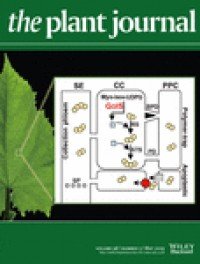Plant Journal Q1 Unclaimed
The aim of TPJ is to publish exciting, high quality science that addresses fundamental questions in plant biology. Typically, the research will provide insight into an as yet unknown mechanism or poorly understood process, will constitute a highly significant contribution to our understanding of plants, and be of general interest to the plant science community. All areas of plant biology are welcome and the experimental approaches used can be wide-ranging and interdisciplinary. Many fully-sequenced genomes and related technologies are now available. It has an SJR impact factor of 2,275.
Plant Journal focuses its scope in these topics and keywords: arabidopsis, gene, protein, expression, plant, stress, resistance, development, phosphate, rice, ...
Type: Journal
Type of Copyright:
Languages: English
Open Access Policy: Open Choice
Type of publications:
Publication frecuency: -


3400 €
Inmediate OANPD
Embargoed OA0 €
Non OAMetrics
2,275
SJR Impact factor327
H Index658
Total Docs (Last Year)1351
Total Docs (3 years)46395
Total Refs9529
Total Cites (3 years)1281
Citable Docs (3 years)6.19
Cites/Doc (2 years)70.51
Ref/DocOther journals with similar parameters
Cell Stem Cell Q1
Molecular Cell Q1
Cell Research Q1
Annual Review of Plant Biology Q1
Nature Cell Biology Q1
Compare this journals
Aims and Scope
Best articles by citations
Floral dip: a simplified method forAgrobacterium-mediated transformation ofArabidopsis thaliana
Microalgal triacylglycerols as feedstocks for biofuel production: perspectives and advances
Efficient transformation of rice (Oryza sativa L.) mediated by Agrobacterium and sequence analysis of the boundaries of the T-DNA
mapman: a user-driven tool to display genomics data sets onto diagrams of metabolic pathways and other biological processes
Structural models of primary cell walls in flowering plants: consistency of molecular structure with the physical properties of the walls during growth
Subcellular localization of H2O2 in plants. H2O2 accumulation in papillae and hypersensitive response during the barley-powdery mildew interaction
Monitoring the expression profiles of 7000 Arabidopsis genes under drought, cold and high-salinity stresses using a full-length cDNA microarray
Retracted: An enhanced transient expression system in plants based on suppression of gene silencing by the p19 protein of tomato bushy stunt virus
Reactive oxygen species, abiotic stress and stress combination
Biosynthesis of plant pigments: anthocyanins, betalains and carotenoids
Gateway-compatible vectors for plant functional genomics and proteomics
Visualization of protein interactions in living plant cells using bimolecular fluorescence complementation
<i>OsDREB</i>genes in rice,<i>Oryza sativa</i>L., encode transcription activators that function in drought-, high-salt- and cold-responsive gene expression
Construct design for efficient, effective and high-throughput gene silencing in plants
Plants have a sensitive perception system for the most conserved domain of bacterial flagellin
Proline biosynthesis and osmoregulation in plants
Regulation of the anthocyanin biosynthetic pathway by the TTG1/bHLH/Myb transcriptional complex in Arabidopsis seedlings
Efficient isolation and mapping of Arabidopsis thaliana T-DNA insert junctions by thermal asymmetric interlaced PCR
Virus-induced gene silencing in tomato
Methods and concepts in quantifying resistance to drought, salt and freezing, abiotic stresses that affect plant water status
A procedure for mapping Arabidopsis mutations using co-dominant ecotype-specific PCR-based markers
The AtGenExpress global stress expression data set: protocols, evaluation and model data analysis of UV-B light, drought and cold stress responses
Regulation of drought tolerance by gene manipulation of 9-cis-epoxycarotenoid dioxygenase, a key enzyme in abscisic acid biosynthesis in Arabidopsis
Ethylene-induced stomatal closure in Arabidopsis occurs via AtrbohF-mediated hydrogen peroxide synthesis

Comments